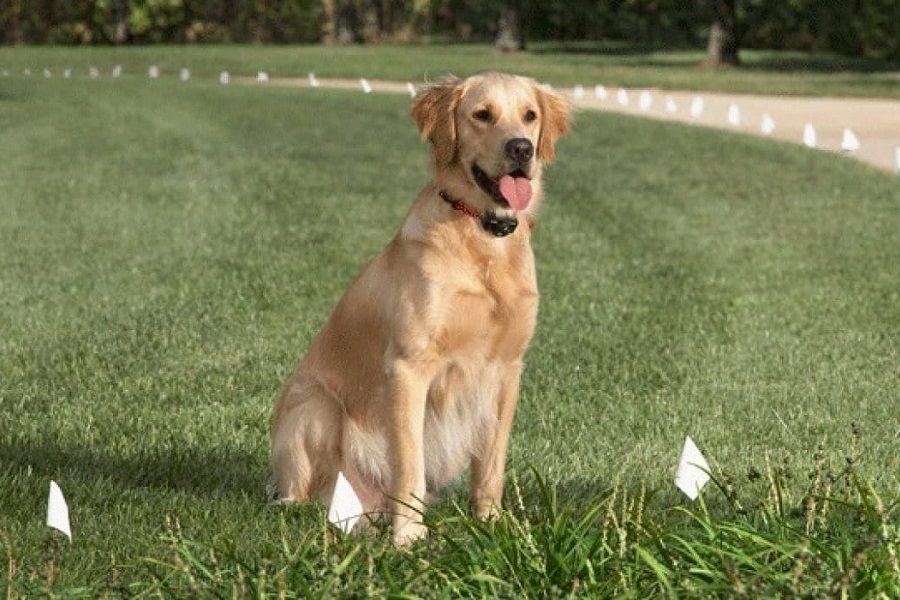Last Updated: 3 years ago
You might think that since the dawn of time dogs never wore any boots so why on earth would they need a pair now?! So do dogs need hiking boots for real or is this just a 21st century fad?
Actually, in the 21st century dogs spend most of their time indoors, rather than outside. So their paws oftentimes don’t have the calluses needed to hike on rough terrains.
They do build those up over time and tend to become better equipped with more hikes. However, if you are more of a one-hit-wonder hiker like I was and decided to do a 20 mile hike after a long streak of being a couch potato – dog booties would come in really handy!
Keep in mind that rocky trails can also easily damage your fur friends’ paws, making it really difficult for them to continue with the hike. I’ve known people who had to carry their dogs with bleeding paws for miles on end because they hadn’t taken this into account.
Cacti, goat heads, sand burrs – all of these nasty guys can easily turn the hike into a disaster for your 4-legged friend. Foxtails can get so deep into your dog’s paws, you’d need a visit to the vet to get them removed. Dog boots help protect your dog from harmful weeds.
Consider the temperature as well. Is it too hot for you to walk barefoot?
Then it’s too hot for your dog as well. If you are concerned about the heat during your hikes, the boots will give you peace of mind even if you pack them with you “just in case”. Better be safe than sorry right?
Some dogs also just generally have very sensitive paws. If you notice that your dog is limping or licking his paws excessively after walks on gravel or even pavement – it’s definitely a good idea to give him that extra padding and protection for rough hiking terrain.
Is your dog allergic?
Some dogs can be allergic to germinating grass, for example. In the spring, a short hike can leave your pet itching all over for days. Boots help with that as well.
Dog boots can be excellent for dogs that drag their feet. With age, some dogs develop arthritis and various other joint problems, which can cause them to drag their paws when walking. So even if you are not going for crazy hikes, they can come in handy.
Do dogs need boots in the snow?
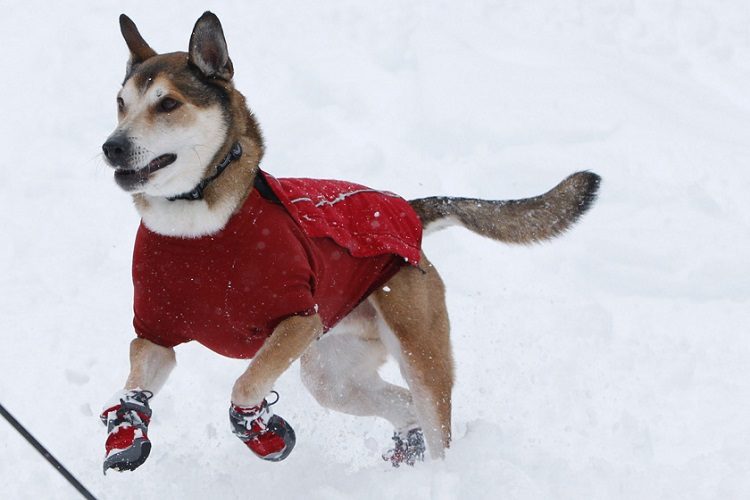
Yes, dogs need boots in winter too. If you go hiking on snow or ice – they will help with the grip.
Some dogs tend to build up snowballs in their pads and also salt that is used to melt ice in winter can be harmful to their paws, so dog boots can be very handy in keeping your fur friend comfortable and safe.
Not all dogs need hiking boots – but most can benefit from them at least from time to time: on ice, on hot days, on long rocky hikes, etc. So they aren’t just a fad, they are actually something useful to consider.
Dog shoes vs Dog Booties
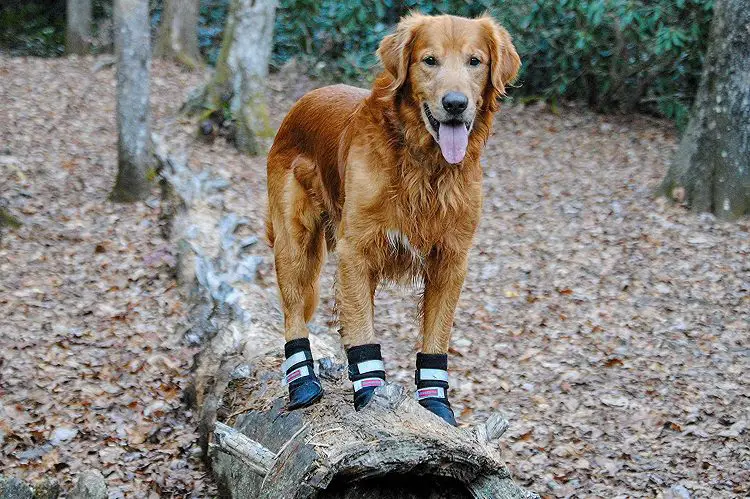
There is actually a difference!
Dog booties typically resemble rain boots. They are lightweight, slip-on, waterproof shoes that have a single layer of protection. They are typically used post-surgery or to protect the paws from salt, dirt, or hot pavements.
Most often they are made of vinyl or plastic that is molded into the shape of a paw – some of them are even disposable. These are great for walks or recovery after an injury – but they won’t offer enough protection for hiking!
Dog boot or shoe refers to real hiking shoe with thick rubber soles and ankle support. It offers more protection, better grip and a secure fit with velcro straps. These are the types you need for hiking.
How to actually get your dog to wear hiking boots?
Now, we’ve dealt with the question “do dogs need hiking boots” but do they like them? In all likelihood the first try is going to look like this:
So have some patience – dogs are not used to having something on their feet!
It’s going to be awkward for them at first and that’s absolutely normal.
Here is what you can do to get your dog to like wearing them.
Step 1: Let your dog sniff ‘em out
Dogs need to get familiarized with new objects.
So before even trying to put the boots on, let your dog sniff them out and get comfortable being around them. Just leave them lying around, and make sure your dog is OK with them.
Step 2: One at a time
Take things slowly – put one boot on and give your dog a treat. You don’t have to fasten the velcro at this point, just leave it on. Let the dog walk around with it. Remove it after a minute or two and give your dog another reward.
Repetition is the mother of success, so keep doing that a few times a day. The boot-reward connection should slowly sink in.
Work your way up to 2, 3, and finally all 4 boots. Be patient! It might take some time but eventually, it will be so worth it.
Step 3: Try leaving them on
After getting all 4 boots on successfully, you can start leaving them on for short periods of time. Let your dog roam around the house in them.
If you progress really well you can try going for a walk outside.
Step 4: Short walks
Okay, now you are ready to go out with all 4 boots fastened. The goal here is to get the boots associated with walks, so that next time you pull them out – rather than run away, your dog will get excited.
To make sure your dog is comfortable walking around, you’ve got to get the fit right.
Dog hiking boot sizing challenges
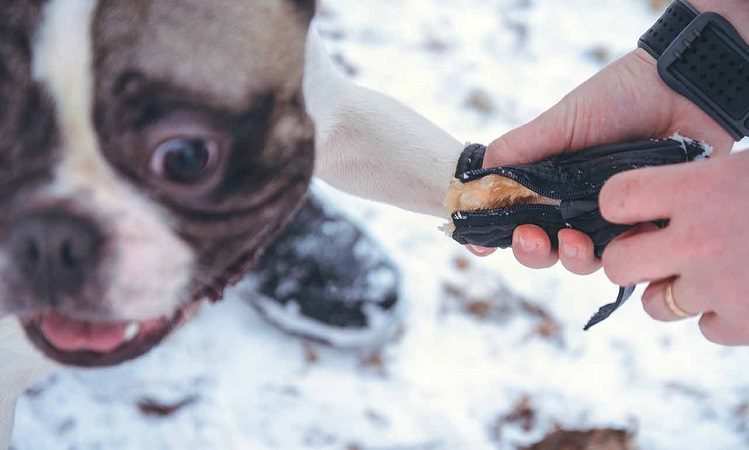
The most common complaint with hiking boots is that they come off.
Proper paw measurement is key here. For the best fit, measure each paw individually as for some dogs the back paws can be smaller than the front paws. In this case, you are better off buying either pairs or all boots individually rather than getting a set of 4.
Here is how to take the measurements properly:
- Put a piece of paper on the floor and place one front paw on the paper.
- Lift the opposite front paw so all the weight falls onto the standing foot and it fully expands.
- Trace around your dog’s paw, remove the paper, and measure the widest part of the outline.
- Follow the same steps with one back paw because sometimes the front and back paws are different sizes.
How to choose the best dog boots for hiking?
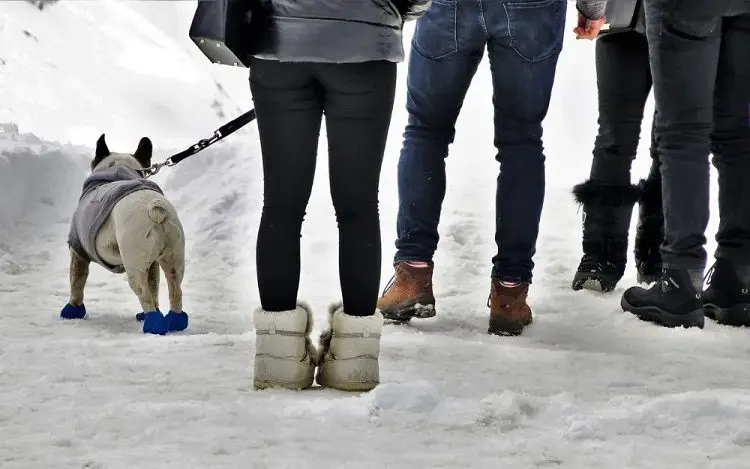
While there are so many options out there, some of the best dog boots for hiking have similar properties. What to look for:
- Material
- Sole
- Sizing
- Quality
Material
Look for quality breathable materials for the upper part of the boot. It’s got to be water-resistant as well.
Some boots offer leather top parts for extra protection. So the choice here would depend on where you hike and in what temperatures.
You can pick something more breathable and light for warmer climates and something more closed-up and durable for rough hikes. The soles should be thick to provide more protection.
Soles
Look for rugged soles, they provide a better grip just like our human shoes would.
The ridges will keep the dog from sliding and slipping.
Size
Sizing is of the utmost importance!
Measure each paw like we mentioned in the sizing instructions and go for different size boots if you have to. Comfort is key here!
Do I need socks for my dog’s hiking shoes?
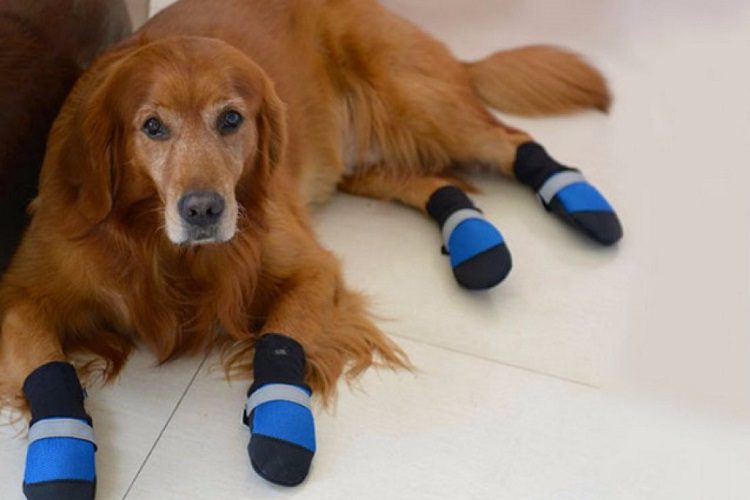
Some owners realize the shoes are too big for, say, the back paws, after having bought them. Then they try to compensate with socks.
Ideally, you would like to find a quality pair of shoes that fits your dog properly. Then you won’t need any socks.
Dogs sweat through their paw pads and it can get very hot and uncomfortable with an extra layer of socks on! This is also the reason why you should look for breathable shoes.
There are some socks with padded bottoms, that can be used as booties as we mentioned above – for daily walks, on hot pavements or to help recover after injuries. They won’t be sufficient for hikes though.
Should I get boots for my dog and what are the alternatives?
In case you are not too thrilled about the boots, exercise caution on hikes. Don’t forget to check your dog’s paws every so often to make sure his paws are in good condition, there are no injuries, cuts or burns.
It is always a good idea to have a small first aid kit with you to deal with any sores and cuts. Sometimes a light coating of Vaseline can do wonders to keep your dog’s paws from getting too dry – and hence, prone to chops and cuts.
So what is your take on this? Do dogs need hiking boots? Let us know in the comments! We hope this article was helpful, and enjoy the great outdoors with your furry friends!
Resources:



